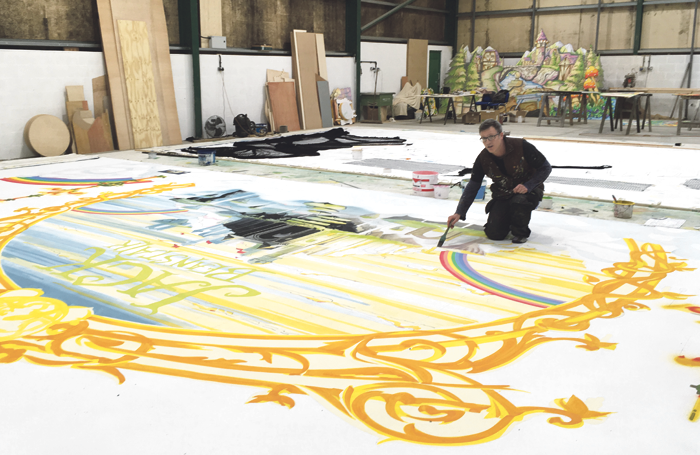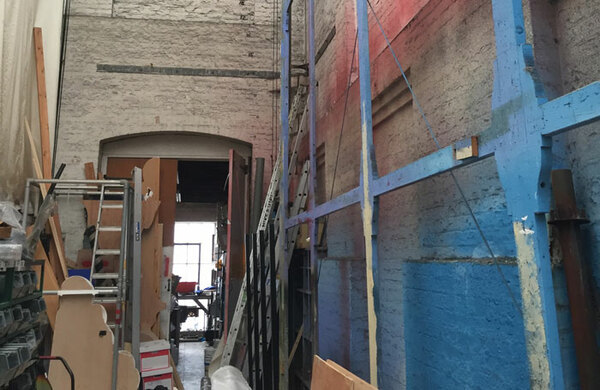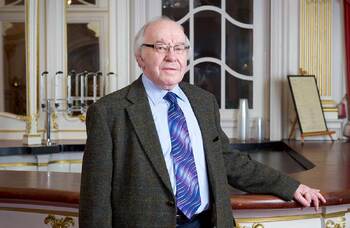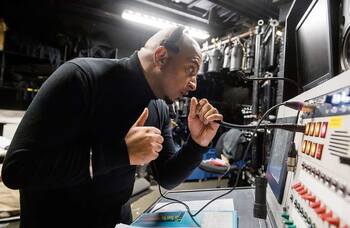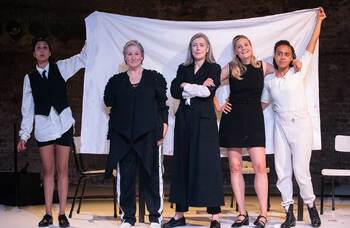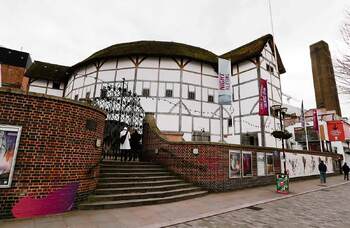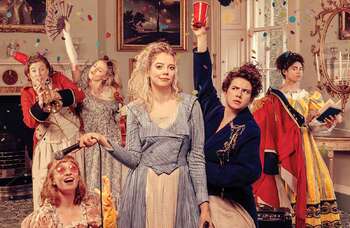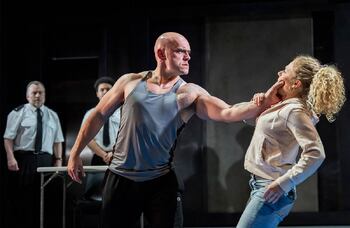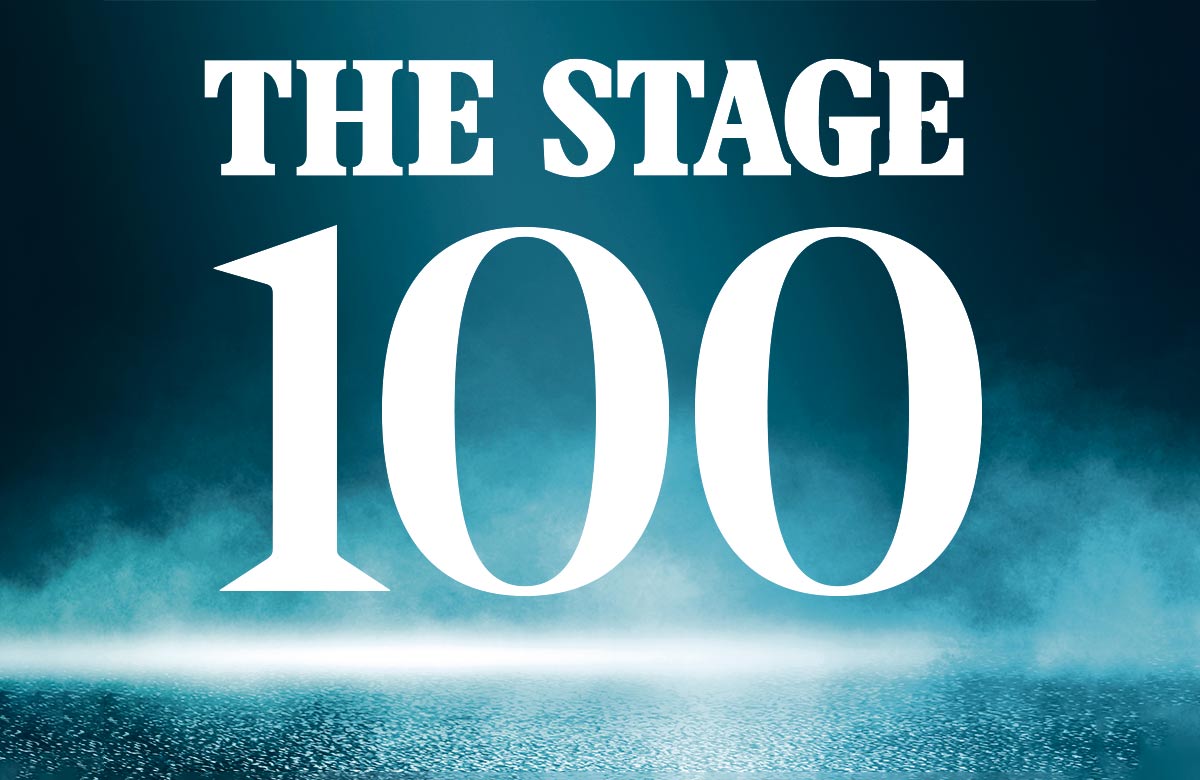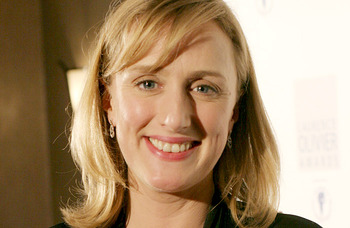Is threatened loss of historic studio sending scenic artists into the wilderness?
As London’s last remaining scene-painting workshop, the at-risk Harkers studio is a vital resource for scenic artists, now predominantly ‘nomadic’ freelances. Designers tell Nick Smurthwaite why they still need these spaces
The threatened closure and redevelopment of the grade II-listed Harkers Painting Studio in south London has focused attention on the plight of itinerant backstage creatives with nowhere to work.
With so many theatres having to outsource their creative and making departments in order to save costs, more scenic painters, set and prop builders are finding themselves professionally homeless.
If Southwark Council gets its way, as is expected, and Harkers shuts down to make way for luxury apartments, another creative space will have been lost to the capital’s beleaguered backstage community.
London’s last scene-painting workshop faces final curtain after luxury flats get go-ahead
“We’re a largely nomadic community”, says Sadeysa Greenaway-Bailey, painter and designer, who has worked alongside German-born scenic painter Grit Eckert at Harkers for the past 10 years.
“Most creatives are not building-based, which is one of the reasons we’re anxious to keep Harkers open. I’ve heard of numerous occasions when creatives have had to turn work down because they haven’t had the space in which to make it. Because of its size, Harkers is brilliant if you’re doing something big and messy.”
It was purpose-built as a scenic painting studio and workshop off the Walworth Road in 1904 by Joseph Harker, ancestor of actors Susannah and Caroline Harker, who worked closely with the great Victorian actor-manager Henry Irving for a number of years. Harker’s work is still in evidence in the West End on the safety curtain at the Theatre Royal, Drury Lane.
In more recent times, Harkers has provided sets for Birmingham Repertory Theatre, the Barbican, the Little Angel Theatre and Talawa Theatre Company.
The studios remain as they were in Harker’s day, even if the demand for vast 10 metre by 20 metre backdrops is not as it once was. It is the last purpose-built scene-painting studio from the Victorian era still used for its original function.

A petition to save Harkers, organised by the actor and conservationist Louise Calf, has been signed by more than 2,500 people, and support has been forthcoming from a number of outside agencies, including the Theatres Trust, the Walworth Society, and the Victorian Society.
“Joseph Harker was a pioneer of scenic design and these studios are a monument to his achievements,” says James Hughes, senior conservation adviser to the Victorian Society. “Its exceptional rarity, impressive degree of intactness and historical interest should be enough to protect it from harm.
“What makes it remarkable is the miraculously conserved interiors that perfectly convey the story of Harker’s work. Everything from the glazed roof to the large moveable frames, which supported the canvases, tell us crucial information about theatrical life in the 19th century.”
David Lan, artistic director of the Young Vic, is one of many top theatre professionals to give voice to his dismay. He says: “The loss of the 113-year-old purpose-built Harkers Studio, which houses one of the few paint frames left in the city, would be a heavy blow to so many of the designers and scenic artists who create the shows the world comes to see.”
Concern over the future of Harkers coincides with the publication of a book about the history of scenic design on the London stage, Backdrop to a Legend, by Raymond Walker and David Skelly. In it the authors look at the lives and working practices of scenic artists, with particular reference to the D’Oyly Carte Opera Company, which used the services of more than 40 scenic artists in its 100-year history.
They also recall the heyday of the capital’s scenic art studios or painting rooms, of which there were a great many in D’Oyly Carte’s prime. Now, with the forward march of digital technology, they are fast becoming an endangered species and the painted backdrop is losing ground to digitally-rendered images.
Continues…
What the Theatres Trust says:
“Paint frames were once an essential part of a large theatre’s workshop. Elaborately painted cloths from skilled scenic painters would give the effect of depth and lighting not possible with the earlier stage technology.
Many rep theatres maintained a stock of cloths to reuse for common settings, a woodland and a village, for example. As theatre technology improved, the fashion for figurative painted backdrops has faded, confined to pantomime.
Modern designers continue to apply large-scale painting techniques to create effects with more abstract designs, combined with contemporary stage technologies.
It is sad when any paint frames are lost. If the associated skills are no longer practised then it will remove a valuable piece of theatrical vocabulary. Paint frames take up a considerable volume of space and, particularly within a city, once lost are unlikely to be economical to reinstate.”
“The quality of digital printing is getting better and it is cheaper for theatres to take that option than employ four or five scenic painters,” says freelance Matt Grace, who is based in York.
Grace did the two-year scenic arts course at the Royal Central School of Speech and Drama in the mid-1990s and has been freelancing ever since, not through choice but because there are so few in-house scenic art jobs to be had.
“Theatres are having to be a lot more accountable and business-like in their approach to work and their dealings with freelancers. Last year I lost a long-standing contract because someone else was offering a cheaper rate.
“One of the problems with being freelance is that you can’t afford to spend time teaching less-experienced people coming into the business because you need to earn a living. When I have a big job, which requires more than one person, it’s more cost effective for me to pay someone experienced a higher rate.”
The job has changed in the last five years, he says. “You’re always trying to cut corners and speed up the process because of the lack of money, which can lead to poorer work.”
“I can understand why more producers and designers are turning to digital printing but I haven’t gone down that road, partly because it would take serious money to invest in the equipment, and partly because you can’t beat painted scenery.”
The pressure to lower his fees is increasing, he says, “especially if you’re working for a small theatre or events company that doesn’t have much money”.
Only a handful of regional theatres retain a scenic artist. Among them is Theatr Clwyd, where Mike Jones has been the sole member of the scenic painting department since 2001.
“There are not many people in my privileged position,” he says. “But the theatres that have let their scenic artists go are missing something. As a freelance you’ll be painting backdrops, or whatever it is, in a factory unit or workshop miles from the theatre, and when it’s finished it goes to the theatre and that’s the last you see of it.
“At Clwyd I have an attachment to it all the way through the process. You have that feeling of being part of the process, all working towards a common goal. It is tough for freelancers because it’s such a transient lifestyle.”
Like Matt Grace, Jones has avoided using digital imagery although Clwyd has staged shows where it is part of the design.

“I don’t think you can ever get rid of the human element in scenic painting,” he says. “So often things need to be changed at the last minute and the relationship between the designer and the scenic painter is sometimes crucial to the finished work.
“We’ve had shows where the digital printing hasn’t been quite right and they’ve called me in to fix it. Clearly it has its place but I don’t think it is ready to take over from scenic painting.”
Perhaps the way forward is a mixture of painted and printed skills. Back at Harkers, both Eckert and Greenaway-Bailey say they have worked on productions that have used a combination of painted and printed scenery. “They bring different qualities to the process,” says Greenaway-Bailey. “Making theatre is all about having those conversations.”
Eckert recalls: “When I worked on One Man, Two Guvnors everything had to be done quickly so they printed the outlines of the cloths, then the scenic artists went to work on freehand-painting them. The problem with printed cloths is they can look very flat. You don’t get the subtlety of colour and line an artist can achieve.”
Sleeping Beauty at Theatr Clwyd, featuring Mike Jones’ scenic work, runs until January 20, 2018
Opinion
Recommended for you
Opinion
Recommended for you
Most Read
Across The Stage this weekYour subscription helps ensure our journalism can continue
Invest in The Stage today with a subscription starting at just £7.99
